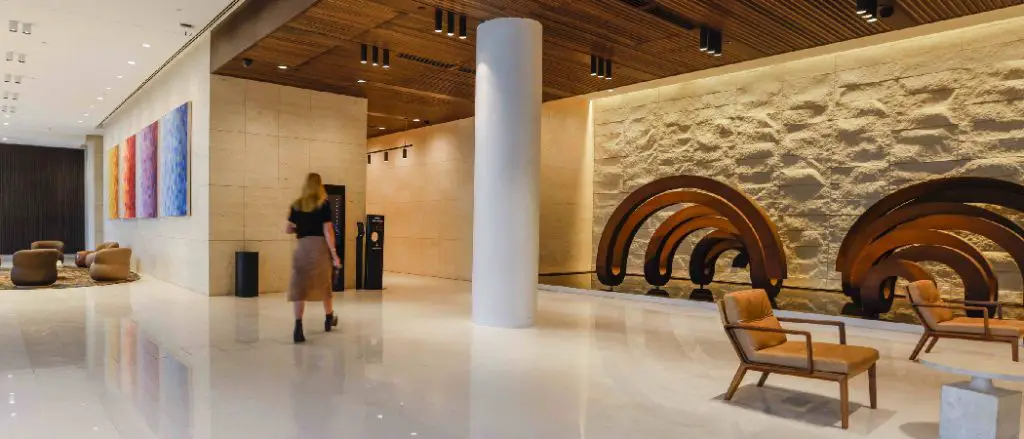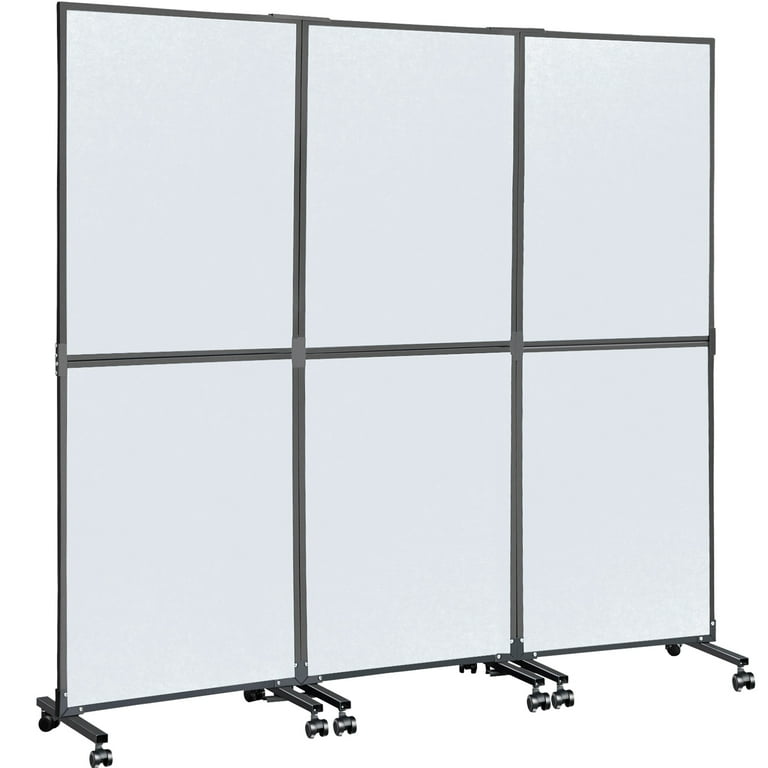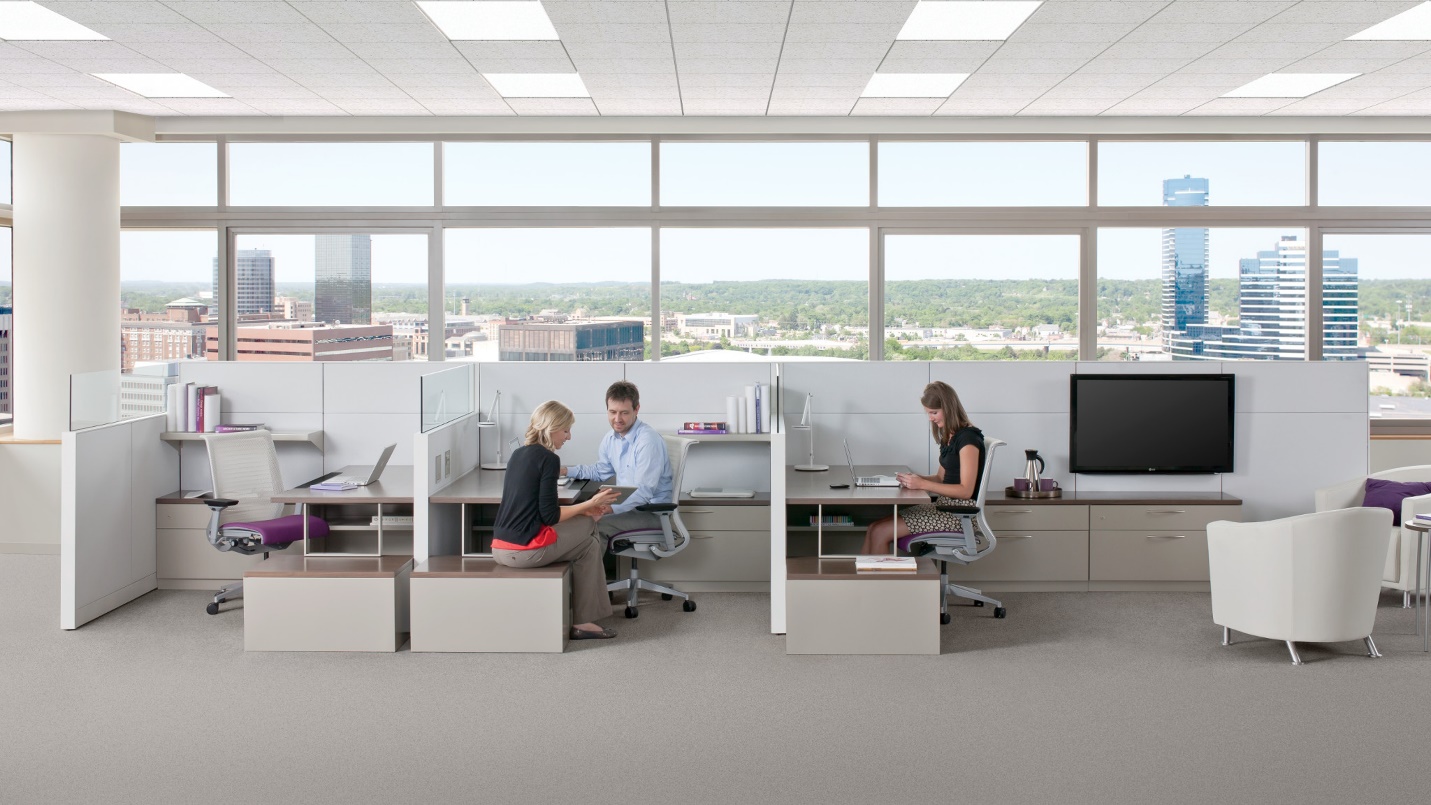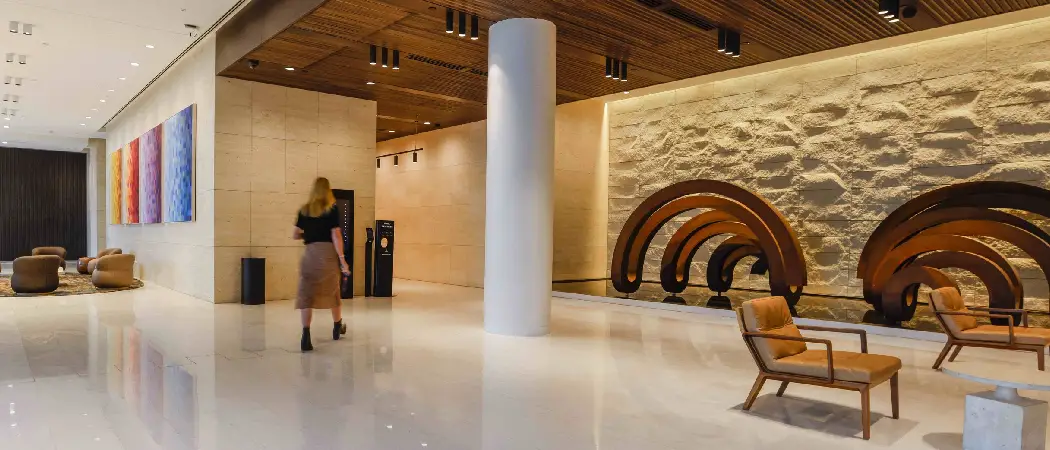To soundproof a cubicle, use acoustic panels or decorative materials to reduce noise transmission. Welcome to our guide on how to soundproof a cubicle!
Whether you’re working in a bustling office or simply want to create a peaceful workspace, soundproofing your cubicle can greatly enhance your productivity and concentration. Excessive noise can be distracting and hinder your ability to focus on tasks at hand.
By following a few simple steps, you can effectively reduce noise transmission and create a more serene work environment. We will explore various methods and materials to help you soundproof your cubicle. So let’s get started and transform your cubicle into a haven of tranquility.

Assessment
Before soundproofing your cubicle, it’s vital to properly assess the existing noise levels and sources within the space.
Identify Noise Sources
Determine the primary sources of noise in your cubicle, such as loud coworkers, equipment, or outside traffic.
- Note down specific noise sources to address them effectively
- Consider placing barriers near the sources for sound absorption
Evaluate Sound Levels
Use a sound level meter to measure the decibel levels in your cubicle and ascertain the severity of the noise issue.
- Identify peak noise times to strategize soundproofing efforts
- Install sound-absorbing materials based on the evaluated sound levels
Planning
Looking to soundproof your cubicle for better concentration and privacy? Start by adding noise-absorbing materials like acoustic panels or foam. Seal any gaps with weather stripping and utilize sound-masking devices to create a quieter work environment.
Budgeting For Materials
Planning to soundproof your cubicle requires careful budgeting for the necessary materials. Before starting the project, it’s important to determine how much you are willing to spend on soundproofing. By setting a budget, you can make informed decisions and find cost-effective solutions. It’s a smart move to research and compare the prices of different materials available in the market. Identify the essential items you will need, such as acoustic panels, weatherstripping, and soundproof curtains. Consider the quality, durability, and effectiveness of each product within your budget range. By doing so, you can achieve an effective soundproofing solution without breaking the bank.
Designing Soundproofing Layout
When it comes to the layout of your cubicle’s soundproofing, careful planning is key. Start by assessing the current layout and identifying the areas where sound is most likely to penetrate or escape. Create a soundproofing strategy that targets these weak points to maximize the effectiveness of your efforts. Utilize sound barriers such as acoustic panels strategically, placing them on walls, ceilings, and even on the floor if possible. Implementing weatherstripping on doors and windows can significantly reduce sound transmission. Additionally, consider using soundproof curtains or room dividers to create a physical barrier against noise. Remember, a well-designed layout can enhance the overall soundproofing of your cubicle and create a more peaceful working environment.
Sample Budget For Materials
To help you gauge the potential costs involved in soundproofing a cubicle, here’s a sample budget breakdown for materials:
| Materials | Estimated Cost |
|---|---|
| Acoustic Panels | $100-$300 |
| Weatherstripping | $20-$50 |
| Soundproof Curtains | $50-$100 |
| Sealant | $10-$30 |
| Door Sweep | $10-$20 |
Keep in mind that these costs are estimates and can vary depending on factors such as the size of your cubicle and the quality of materials chosen. However, having a budget breakdown like this can give you a starting point and help you allocate your resources accordingly.
In conclusion, effective planning is crucial when it comes to soundproofing a cubicle. By budgeting for materials and designing a soundproofing layout, you can successfully create a quieter and more productive workspace. So get started on your soundproofing project today and enjoy the benefits of a peaceful environment in your cubicle.
Materials
When it comes to soundproofing your cubicle, selecting the right materials is crucial for effective noise reduction. By using the proper soundproofing materials, you can create a more peaceful and productive workspace.
Soundproofing Foam Panels
Soundproofing foam panels are an effective and affordable option for reducing noise in a cubicle. These panels absorb sound waves, minimizing reverberation and reducing overall noise levels. When installing soundproofing foam panels, ensure thorough coverage to maximize their effectiveness.
Acoustic Curtains And Screens
Acoustic curtains and screens provide an excellent solution for soundproofing a cubicle. These specialized curtains and screens are designed to block and absorb sound, minimizing distractions and creating a quieter work environment. When selecting acoustic curtains and screens, opt for high-quality, dense materials for optimal noise reduction.
Installation
In order to effectively soundproof a cubicle, proper installation is key. By following the right steps and techniques, you can create a quieter and more conducive work environment. This section will discuss the important aspects of installation, including proper panel placement and sealing gaps and cracks.
Proper Panel Placement
When it comes to soundproofing a cubicle, the placement of soundproofing panels is crucial. Ensure that the panels are strategically placed to effectively absorb and block sound. Consider the following tips for proper panel placement:
- Position panels along the walls near the source of the noise.
- Arrange panels to form a barrier between the cubicle and the noise source.
- Utilize ceiling panels to address sound that travels from overhead.
Sealing Gaps And Cracks
Another important aspect of installation is addressing any gaps and cracks that can allow sound to pass through. Thoroughly inspect the cubicle for openings and seal them with the appropriate materials. Follow these steps to effectively seal gaps and cracks:
- Use acoustic sealant or weatherstripping to seal gaps around doors and windows.
- Fill in any cracks in the walls with soundproofing caulk or foam sealant.
- Install door sweeps to eliminate gaps at the bottom of doors.
Furniture Arrangement
Discover effective tips for soundproofing your cubicle with proper furniture arrangement. Create a private and peaceful workspace with strategic positioning of desks, partitions, and acoustic panels. Say goodbye to distractions and enjoy enhanced productivity in a quieter environment. Perfect for busy offices or open-plan work areas.
Strategic Desk Placement
If you’re working in a noisy and distracting office environment, you know how difficult it can be to focus on your work. Thankfully, there are several ways you can soundproof your cubicle to create a more peaceful and productive workspace. One effective method is through strategic furniture arrangement, particularly when it comes to your desk placement.
When positioning your desk, consider placing it against a wall or away from high-traffic areas. This can help to minimize noise from colleagues walking by or engaging in conversations nearby. Ensure that your desk is not directly facing any sources of noise, such as printers or loud office equipment. By positioning your desk in this manner, you can create a barrier between yourself and the distractions, making it easier to concentrate on your tasks.
Adding Sound-absorbing Furniture
In addition to strategic desk placement, another effective way to soundproof your cubicle is by adding sound-absorbing furniture. This type of furniture is specially designed to reduce noise and echoes in the office environment, providing you with a quieter working space.
Consider incorporating items such as bookshelves, cabinets, or acoustic panels into your cubicle. These pieces of furniture not only serve a functional purpose, but they also act as barriers to absorb sound waves and prevent them from bouncing around the room. By strategically placing these sound-absorbing furniture items around your workspace, you can significantly reduce the amount of noise that reaches your ears.
When selecting sound-absorbing furniture, choose options made from materials like fabric, foam, or cork, as these materials are excellent for absorbing sound vibrations. Additionally, you can add furniture with textured surfaces, as they can help diffuse sound waves and minimize echoes in your cubicle.
In conclusion, by paying attention to your furniture arrangement in your cubicle, you can greatly enhance the soundproofing of your workspace. Positioning your desk strategically and incorporating sound-absorbing furniture can effectively reduce distracting noise and create a more peaceful environment, allowing you to stay focused and productive throughout the day.

Credit: www.walmart.com
Technological Solutions
When it comes to soundproofing a cubicle, utilizing technological solutions can be highly effective in creating a quiet and peaceful work environment. Here are some top-notch options that can help you achieve soundproofing success:
White Noise Machines
A white noise machine can mask unwanted sounds by emitting a constant, soothing noise that helps to drown out distractions. These machines are compact and easy to use, making them a convenient option for soundproofing your cubicle.
Noise-canceling Headphones
Noise-canceling headphones are a fantastic choice for blocking out external noise and allowing you to focus on your work without interruptions. These headphones use advanced technology to actively cancel out surrounding sounds, providing you with a quiet space to concentrate.
Maintenance And Testing
To soundproof a cubicle, perform regular maintenance and testing to ensure optimal noise reduction. Implement acoustic panels, seals, and carpets for effective sound absorption. Conduct sound tests to identify weak spots and make necessary adjustments.
Maintaining and testing your cubicle soundproofing is crucial for ensuring optimal noise reduction effectiveness.
Regularly Inspecting Soundproofing
Regularly inspect seals, gaps, and materials for wear and tear or damage.
Check for any signs of cracks or holes that may compromise soundproofing.
Repair or replace any damaged components immediately to maintain effectiveness.
Conducting Noise Level Checks
Use a decibel meter to measure noise levels inside and outside the cubicle.
Compare readings to baseline levels to determine soundproofing efficiency.
Adjust soundproofing materials as needed to achieve desired noise reduction.


Frequently Asked Questions On How To Soundproof A Cubicle
How Can I Make My Cubicle More Soundproof?
To make your cubicle more soundproof, add sound-absorbing materials, such as acoustic foam panels or rugs. Seal any gaps or cracks with weatherstripping. Use noise-canceling headphones or a white noise machine for additional sound reduction. Consider a soundproof curtain or divider for extra privacy.
Do Cubicle Walls Block Sound?
Cubicle walls can partially block sound but may not eliminate it completely. The level of sound blocking depends on the material and thickness of the walls.
How Do You Drown Out Office Noise?
To drown out office noise, try using noise-cancelling headphones or earplugs. You can also play soothing music or white noise through headphones to mask the sounds. Another option is to move to a quieter area of the office or use soundproof panels or curtains to reduce noise levels.
What Is The Best Way To Soundproof An Office?
The best way to soundproof an office is by using sound-dampening materials on walls, floors, and ceilings. Install acoustic panels, curtains, or screens to absorb and reduce noise. Additionally, consider using soundproof doors and windows to minimize sound transmission.
Conclusion
To conclude, soundproofing your cubicle provides a multitude of benefits, from increased focus and productivity to a peaceful and distraction-free workspace. By implementing simple techniques such as using acoustic panels, door sweeps, and white noise machines, you can effectively reduce noise and create a more conducive work environment.
So, take action and transform your cubicle into a haven of tranquility today.

